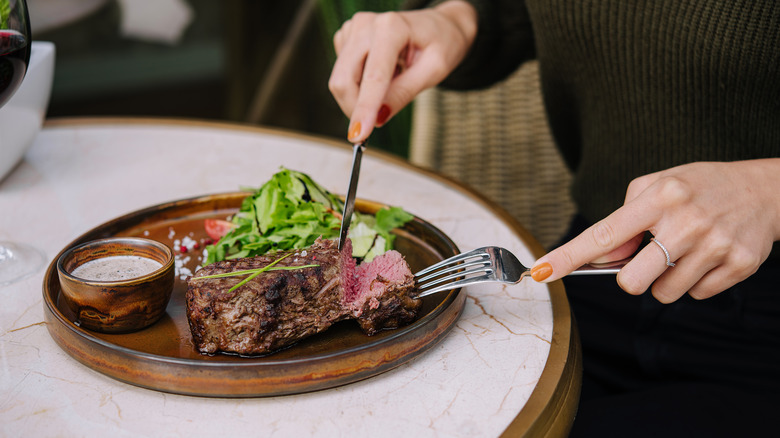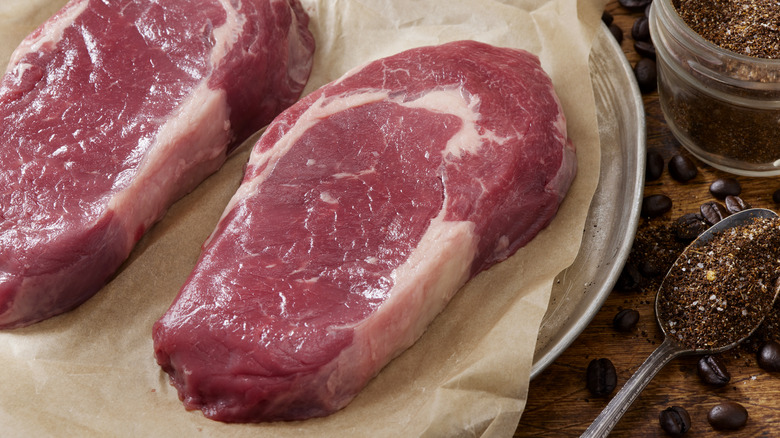The Once-Popular Steak Cut That Disappeared From Restaurant Menus
While famed steaks like filet mignon and porterhouse so often take the spotlight, there's a wide array of other underrated cuts you should try. For instance, look out for the Delmonico — a well-marbled, thick, and meaty variety. From the late 19th century into the early 20th century, this cut was all the rage, its name alone a marker of quality. Intertwined with New York's respected Delmonico's Steakhouse, the slice of beef pioneered an era of restaurant culture. Yet nowadays, you'll be hard-pressed to find it on a menu altogether. What happened?
As is often the case with retro food trends, new preferences emerged, slowly forcing the Delmonico cut into obscurity. Cuts like the ribeye really took off in the 1950s and still garner a reputation as a top-shelf favorite. Meanwhile, the original family-owned locations of Delmonico's Steakhouse — which popularized the beef cut — all shuttered in 1923 due to Prohibition and changing dining customs. To add to the confusion, the Delmonico steak never referred to a precise butchered piece of meat in the first place, but rather served as an umbrella term for a few different, high-quality cuts. With the originators out of business and new trendy types of steak spreading instead, the Delmonico lost its coveted status as the definitive premium steak.
The Delmonico refers to several types of steak
Today, you can still request a Delmonico from a restaurant or butcher, but you won't always receive the same cut. Dine at the currently operating Delmonico's restaurant, and you'll be served a boneless ribeye — the most popular cut of steak in America. However, there are other candidates, too.
Some butchers offer a top loin derived from the chuck under the name. Others might sell a strip steak or a chuck eye. And even the lack of a bone isn't a constant; bone-in ribeyes and loin steaks qualify, too. The naming discretion's up to each individual butcher, so it's a good idea to ask while purchasing. Since the term Delmonico no longer draws such a buzz, these cuts of beef are oftentimes a good value.
Traditionally, the steak is covered in butter and broiled, but high-heat grilling works, too. The cut's richness is then further enhanced with a slab of herby compound butter, and at the original steakhouse, the cut's served alongside Delmonico potatoes — a casserole-like cheesy potato dish. Sample such a mouth-watering combination for yourself, and the steak's original buzz will become clear.


